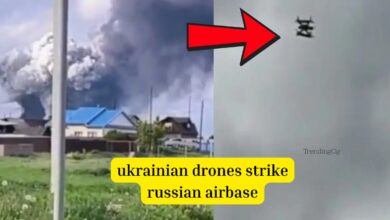Ceasefire Meaning: Understanding the India-Pakistan Truce and Recent Violations
What is a Ceasefire?

A ceasefire (or cease-fire) is a temporary halt in fighting between warring parties, often agreed upon to facilitate peace talks, humanitarian aid, or de-escalation of conflict. In military terms, it means both sides stop aggressive actions, though tensions may persist.
Key Aspects of a Ceasefire:
-
Temporary or Permanent: Some ceasefires are short-term, while others lead to long-term peace.
-
Formal or Informal: It can be a written agreement or an unwritten understanding.
-
Violations: Breaching a ceasefire can reignite conflict, leading to casualties and diplomatic fallout.
India-Pakistan Ceasefire: A Fragile Truce
The India-Pakistan ceasefire along the Line of Control (LoC) and International Border (IB) has been a critical yet unstable arrangement. The Director General of Military Operations (DGMO) of the Indian Army and their Pakistani counterparts periodically discuss ceasefire terms to prevent escalation.
Recent Ceasefire Agreement (2021 & Extensions)
In February 2021, India and Pakistan agreed to a full and immediate ceasefire after discussions mediated by backchannel diplomacy. The agreement aimed to reduce cross-border firings and improve relations.
However, ceasefire violations by Pakistan have been frequently reported, leading to casualties and military standoffs.
Ceasefire Violations: Why Do They Happen?
Common Reasons for Ceasefire Breaches:
Cross-Border Infiltration: Pakistan-based militants often attempt to enter Jammu & Kashmir, leading to Indian retaliation.
Provocations: Unprovoked firing or shelling from either side disrupts peace.
Political Tensions: Diplomatic strains between India and Pakistan often reflect on the border.
Recent Ceasefire Violation Incidents
-
2023-2024: Multiple reports of Pakistan violating ceasefire in Akhnoor, Poonch, and Srinagar sectors.
-
DGMO Meetings: India and Pakistan’s military officials hold talks after major violations, but progress remains slow.
DGMO Full Form & Role in Ceasefire Monitoring
The Director General of Military Operations (DGMO) is a senior Indian Army officer responsible for strategic military decisions, including ceasefire monitoring.
Key Responsibilities of DGMO:
-
Communicating with Pakistan’s DGMO to discuss ceasefire violations.
-
Coordinating with the Ministry of External Affairs (MEA) on border issues.
-
Overseeing military responses to cross-border aggression.
Donald Trump’s Role in India-Pakistan Ceasefire
In 2021, former US President Donald Trump tweeted:
“After a long night of talks mediated by the United States, I am pleased to announce that India and Pakistan have agreed to a full and immediate ceasefire. Congratulations to both countries on using common sense and great intelligence.”
While the US played a role in backchannel diplomacy, India maintains that bilateral talks are the primary way forward.
Is the India-Pakistan War Over? Latest Updates
As of 2025, the ceasefire largely holds, but sporadic violations occur. Key developments include:
-
Ceasefire Extension: Both nations have informally extended the truce, but trust remains low.
-
Diplomatic Talks: India insists Pakistan must stop supporting terrorism for lasting peace.
-
Public Sentiment: Citizens on both sides desire peace, but political rhetoric keeps tensions alive.


